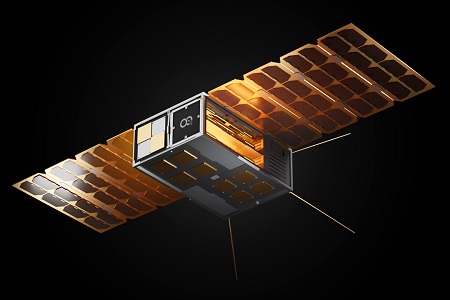 The US Patent and Trademark Office has granted a patent to OQ Technology for its IoT Wake-up technology. It is the first out of the company’s six patent applications in the US and the EU.
The US Patent and Trademark Office has granted a patent to OQ Technology for its IoT Wake-up technology. It is the first out of the company’s six patent applications in the US and the EU.
Wake-up is a smart power-saving technology within OQ’s terminal IoT devices that allows them to wake up and communicate with the base station (satellite) only when needed. The function can be adjusted in line with the growth of the number of satellites, with each satellite being able to connect with thousands of sensors. Through wake-up, OQ aims to achieve the 10-year battery-life goal set by 3GPP standards for narrowband IoT (NB-IoT) wireless communications.
OQ’s other patent applications include frequency synchronisation, timing synchronisation, IoT device localisation, inter-satellite link technology, and a satellite system design and network architecture for cellular IoT communication between satellites and ground stations. The ‘wake-up’ technology and the technologies still pending patents are all to be implemented onboard OQ’s satellite constellation in low Earth orbit (LEO).
Omar Qaise, Founder and CEO of OQ Technology said: “I’m very grateful to the US Patent and Trademark Office for granting OQ Technology this patent. This and the pending patents will give us an edge over competitors and security to our intellectual property. In addition to the patent for ‘wake-up’, we have five more patents in the queue to be approved both in the USA and Europe which we expect to take place this year. With these patents and our frequency licenses and chip partnerships, we are the pioneer company who is well-positioned to provide 3GPP compatible satellite NB-IoT over non-terrestrial networks.
“OQ Technology is the only company in the world that uses standardised 3GPP cellular technology for NB-IoT to connect devices to satellites. We have been leading the way for satellite-based 5G communications since we created the world’s first universal plug and play IoT device that can provide connectivity using LEO satellite infrastructure. Testing its orbit using our Tiger-1 mission in 2019 was another. This is yet another important milestone for us.”
The company has also developed a technology that allows it to use the cheaper standard mobile chips ($5) for its satellite connectivity, instead of the expensive satellite chip ($100) that will have to be installed and used when leaving terrestrial networks.












Add Comment